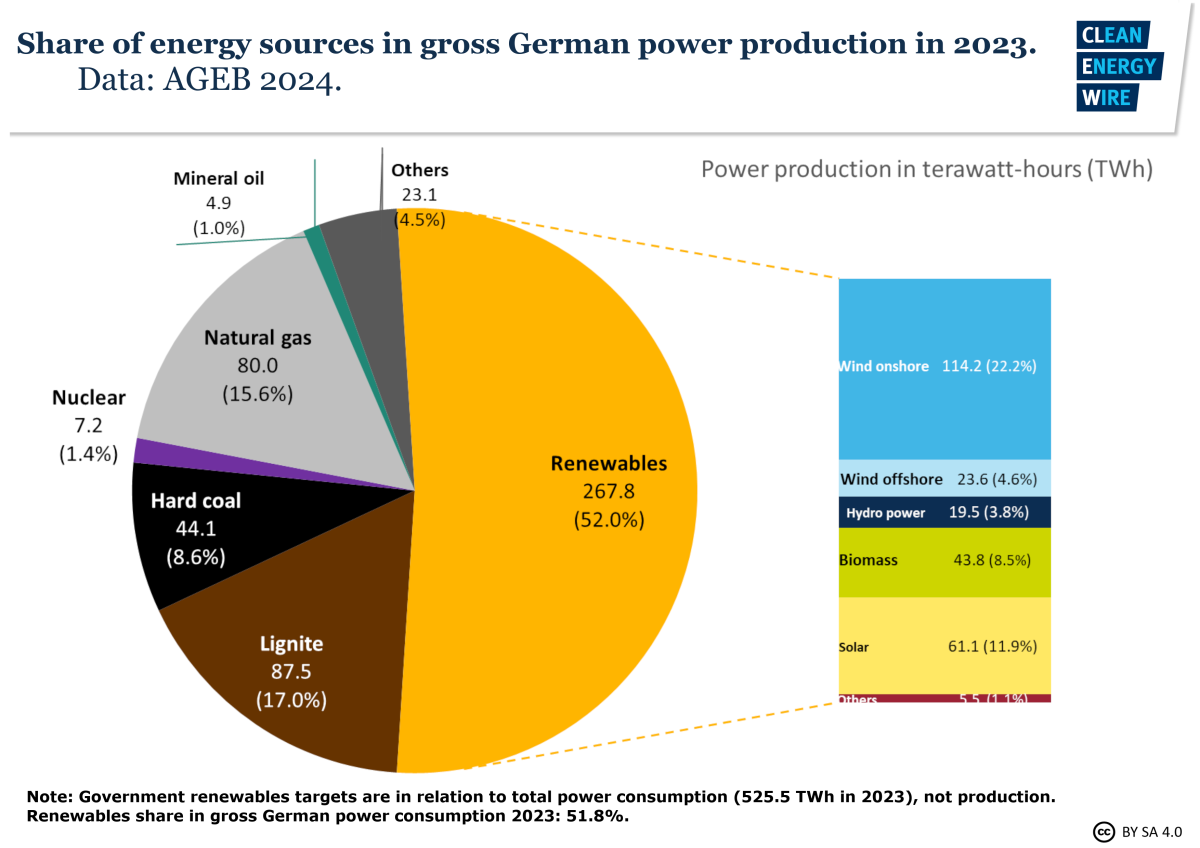The climate progress in Europe has been too little and too late, but that is better than none. A look on this page at Denmark and Germany.
A great majority of Denmark’s energy is not environmentally friendly.
Denmark has made remarkable progress using wind, but it still is 85% dependent upon carbon emitting fuels.

Denmark uses wood pellets and fossil fuels for electricity, heating and transportation. By 2024 wind, solar and biofuels may have exceed 50% of all energy supply. Denmark counts its wood pellets as green, but, as I show on a dedicate page, they are much worse than coal. Counting them correctly 87 percent of Denmarks energy use is from high emission sources!
Focusing only on electrical generation, Denmark miscounts electricity from the wind.
Denmark’s on shore winds are on average only 11-12 mph (19 km/hour) at a height of 10 meters, but off shore at 90 meters height they are about an estimated 22 mph (32 km/hour). The depth of the seabed off Denmark is only 10 – 20 meters, compared to 37-50 meters off New England. The countryside is flat and a great majority is fields. The North Sea and Baltic Sea are close. Denmark’s population is about 5.9 million. Denmark annually uses one-half as much electricity per capita as the USA — about 33 billion kWh (2020). This situation is highly favorable for using wind.

Source of chart: https://www.statista.com/statistics/1235360/denmark-distribution-of-electricity-production-by-source/
But, despite the above graph, arguably Denmark gets only around 18% of its electricity from wind!
Per year Denmark produces 20.85 billion kWh of electricity, of which it exports 12.7 billion or about 45%. Since it would not be economic to burn bio- or fossil fuels in order to export the electricity, the peak kilowatt capacity of turbines must exceed domestic needs by 45%. (Since the average efficiency of turbines was only 24% in 2022, huge numbers of turbines must have been installed.)
No other nation is even close to having capacity to supply its domestic electrical needs from wind, — much less export it —or has the geographic position, the low per capita electrical demand ,and low population to do so
Denmark also imports 60% of its electricity! This is not surprising, because often there is no wind or very little wind. Where does this imported electricity come from? Other European countries almost never have an excess of nuclear or solar energy, and wind strength is regional. So the imported electricity comes from fossil fuels. (France sometimes exports energy from nuclear plants, but Denmark does not abut France.)
Denmark uses 15% more electricity than it generates. Calculating on the total base of usage, 30% of its electricity is from domestic CO2 emitting fuels and 52% if from imported fossil fuel electricity. Only 18 % of all electricity it uses is from wind/solar generation.
Should we give credit to Denmark for the 45% of its wind produced electricity it exports? Why not!
Germany: Over 80% of energy is from high emission sources.

Over the 50 plus years, gas and nuclear replaced coal, and nuclear is now being replaced by wind and solar energy. Because the German economy is large (population 84 million), this is perhaps the largest saving of CO2 in Europe.

The above charts show that after deducting biomass, about 44% of all electricity produced in Germany comes from low CO2 sources.